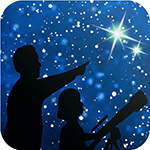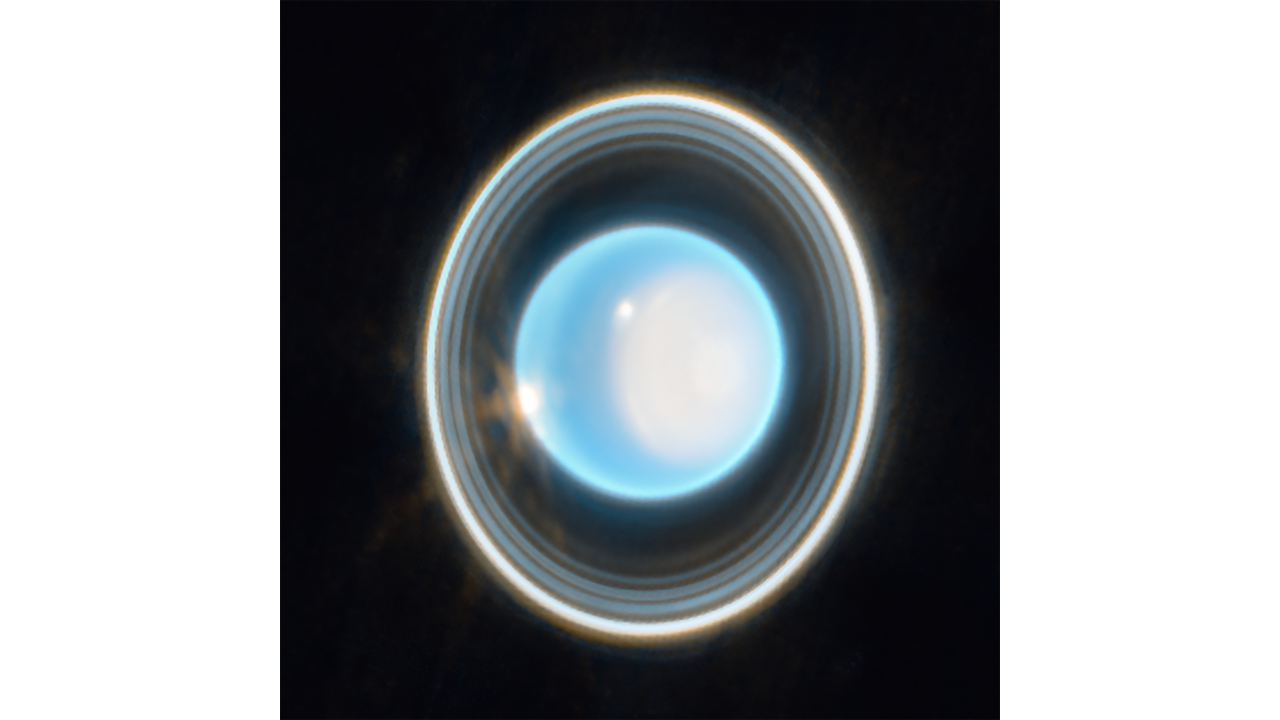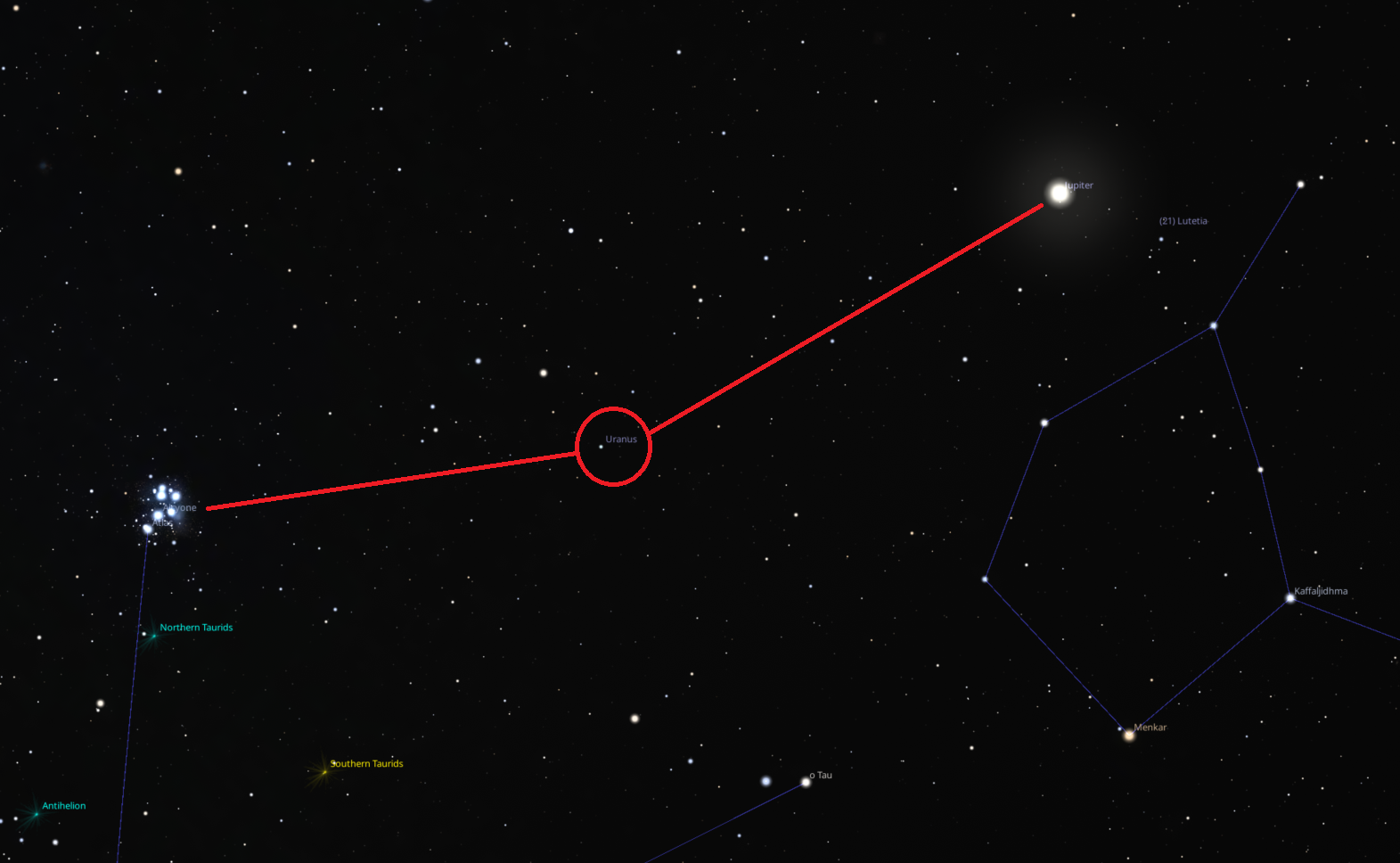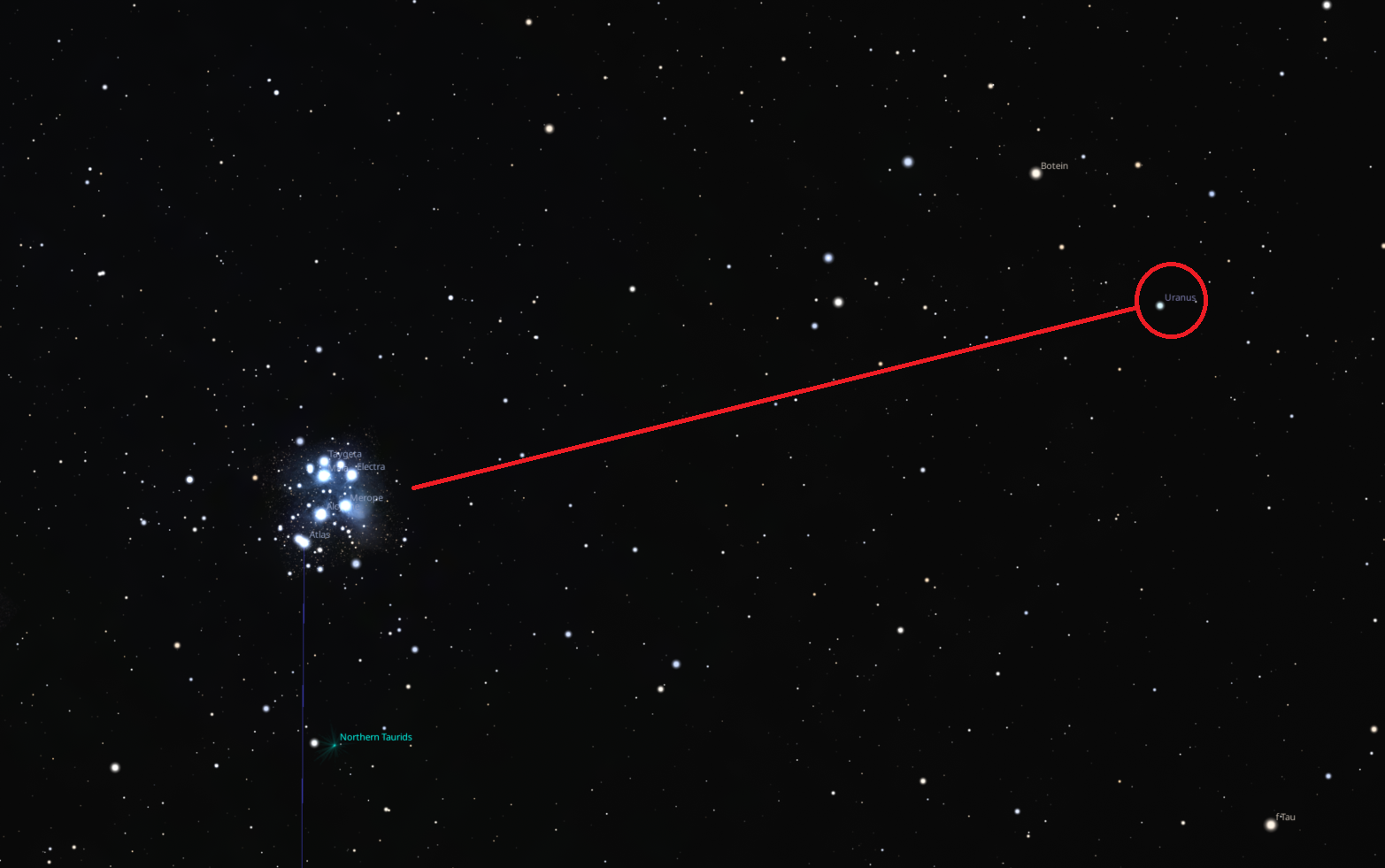You might be familiar with Saturn as the solar system’s ringed planet, with its enormous amount of dust and ice bits circling the giant planet. But Uranus, the next planet out from the Sun, hosts an impressive ring system as well. The seventh planet was the first discovered telescopically instead of with unaided eyes, and it was astronomer extraordinaire William Herschel who discovered Uranus March 13, 1781. Nearly two centuries passed before an infrared telescope aboard a military cargo aircraft revealed the planet had rings in 1977.[1]
Since that discovery, multiple observatories have revealed more details of Uranus and its ring system. Most recently, the NASA-led JWST space observatory captured the planet and its rings in detail. This recent image combines just 12 minutes of exposure in two filters to reveal 11 of the planet’s 13 rings. Even some of the planet’s atmospheric features are visible in this image. Even with advanced imaging like that from JWST, much of Uranus remains a mystery, including why it orbits the Sun on its side. This is because only one spacecraft has ever visited this planet: NASA’s Voyager 2, which flew by the distant planet in the mid-1980s.[2]
Planetary scientists are hoping to change that soon, though. Scientists recommended in a report released last year from the National Academies of Sciences, Engineering, and Medicine that Uranus be the focus on the next big planetary science spacecraft mission. Such a large-scale mission would gain insight into this icy giant planet and the similar solar system planet, Neptune.
Sky map picturing M45, Uranus and Jupiter, Stellarium
If you want to catch a view of Uranus with your own eyes, now is prime time to view it. This ice giant planet lies perfectly positioned in mid-November, at so-called “opposition,” when its position in its orbit places it on the other side of the Sun from Earth. That location means our star’s light reflects off Uranus’ icy atmosphere, and the planet appears as its brightest.
Sky map picturing M45 and Uranus, Stellarium
To find it, look overhead just after midnight on November 13. Uranus will lie about halfway between the brilliant planet Jupiter and the diffuse glow of the Pleiades star cluster (M45). While Uranus may look like a bright blinking star in the night sky, its blue-green hue gives aways its identity. Binoculars or a telescope will improve the view.
For more about this oddball planet, visit NASA’s Uranus page.
Image 1:
Uranus hosts 13 faint rings, 11 of which are visible in this JWST image. The planet was 19.67 times the Earth-Sun distance from our planet (1.83 billion miles) when JWST captured exposures through two near-Infrared filters on February 6, 2023. The white region in the right side of Uranus is one of the planet’s polar caps. This icy world orbits the Sun differently from the rest of the solar system’s planets – Uranus rolls along on its side.
[NASA, ESA, CSA, STScI; Image Processing: Joseph DePasquale (STScI)]
[1] For more about the infrared scope, https://web.archive.org/web/20230429120852/https://www.nasa.gov/vision/universe/watchtheskies/kuiper.html
[2] See more about the flyby at https://www.nasa.gov/history/35-years-ago-voyager-2-explores-uranus/
This article is distributed by NASA’s Night Sky Network (NSN).
The NSN program supports astronomy clubs across the USA dedicated to astronomy outreach. Visit nightsky.jpl.nasa.gov to find local clubs, events, and more!




